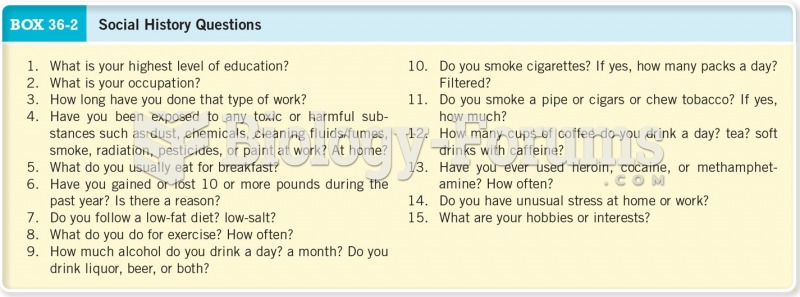|
|
|
Walt Disney helped combat malaria by making an animated film in 1943 called The Winged Scourge. This short film starred the seven dwarfs and taught children that mosquitos transmit malaria, which is a very bad disease. It advocated the killing of mosquitos to stop the disease.
More than 4.4billion prescriptions were dispensed within the United States in 2016.
The Babylonians wrote numbers in a system that used 60 as the base value rather than the number 10. They did not have a symbol for "zero."
Patients who cannot swallow may receive nutrition via a parenteral route—usually, a catheter is inserted through the chest into a large vein going into the heart.
There used to be a metric calendar, as well as metric clocks. The metric calendar, or "French Republican Calendar" divided the year into 12 months, but each month was divided into three 10-day weeks. Each day had 10 decimal hours. Each hour had 100 decimal minutes. Due to lack of popularity, the metric clocks and calendars were ended in 1795, three years after they had been first marketed.
 A plot of trophic diversity across the major groups of organisms shows highest trophic diversity amo
A plot of trophic diversity across the major groups of organisms shows highest trophic diversity amo
 In one-male group species, extra males typically reside in all-male “bachelor” groups. These are Han
In one-male group species, extra males typically reside in all-male “bachelor” groups. These are Han





